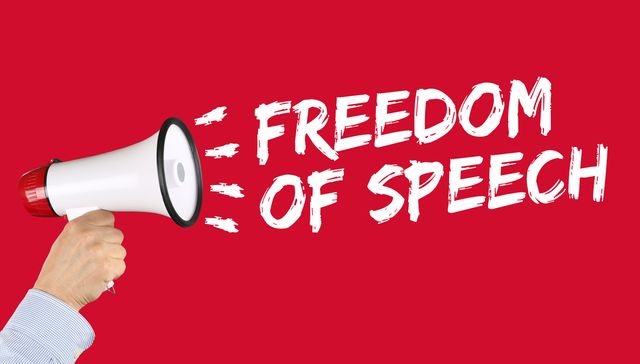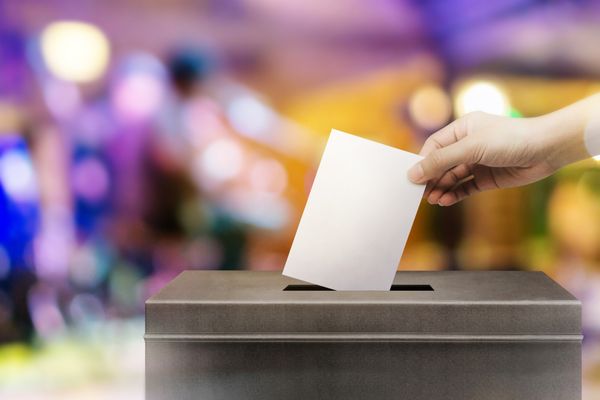5.1.3
Failure To Reform The Communist Party & Soviet Gov
Gorbachev's Aims for Reforming the Communist Party
Gorbachev's Aims for Reforming the Communist Party
Gorbachev believed communism had been distorted over the years, especially by Stalin. He wanted to return it to its Leninist form.


Aim of democracy
Aim of democracy
- Gorbachev wanted to move the Leninist one-party dictatorship towards a democracy. After all, under the communist theory, the phase where the country was ruled by dictatorship should have been temporary.
- Gorbachev presented the idea that Lenin had wanted to move towards democracy in the long-term.
- Gorbachev wanted to use democracy as a way to purge corrupt officials from the Party.


Gorbachev and freedom of speech
Gorbachev and freedom of speech
- He also wanted greater freedom of speech.
- Through greater participation in government, Gorbachev wanted to make people less cynical about Soviet rule.


Danger of reforms
Danger of reforms
- Gorbachev looked at the reforms Khrushchev had made. He realised that limited reform could lead to demands for greater change in the political landscape.
- The Communist Party was the main institution holding together the entire Soviet Union. It had the role of a supra-national body.
- It was important not to undermine the Party so much that the country would collapse around it.
Reforming the Communist Party and Soviet Government
Reforming the Communist Party and Soviet Government
Gorbachev's political reforms, most famously 'glasnost', combined with his economic reforms meant holding the USSR together was becoming impossible.


Encouraging debate
Encouraging debate
- 1985: Gorbachev tried to open up debate in the Party and gave intellectuals and academics more power to express their opinions.
- The public was also given better access to public records and documents.


Purging old members
Purging old members
- Gorbachev purged Party leaders who had been closely allied with Brezhnev. New ministers joined the government, who favoured more reform.
- Nikolai Ryzkhov became Prime Minister.
- Viktor Chebrikov became KGB head.
- Boris Yeltsin became head of the Communist Party in Moscow.


Glasnost
Glasnost
- ‘Glasnost’ was one of Gorbachev’s most enduring legacies as leader of the Soviet Union.
- Glasnost means ‘openness’. It relied on the idea that the government had a responsibility to be truthful to the people about Soviet history and its economy.
- This included a more liberal approach to the media. Aleksandr Yakovlev appointed radical editors in his role as head of state media.
- 1988: Criticisms of Marx and Lenin began to appear in the press. Foreign media became more widely available.


Later reforms
Later reforms
- Gorbachev’s later reforms centred around moves towards democracy.
- 1988: The Party Conference allowed elections to Soviets involving several candidates.
- Citizens could choose between different candidates from within the Communist Party.
- The first election of this sort took place in 1989. 5 members of the Central Committee lost their seats, and more radical (reforming) Communists were more successful.
- Radicals like Boris Yeltsin did well. He won 89% in Moscow.


1990 Republic elections
1990 Republic elections
- A further weakening of the Communist Party happened during the nationwide elections of 1990. ‘Democratic Russia’ secured 85% of the seats in Moscow.
- It became increasingly clear that Gorbachev’s reforms were backfiring.
1Communist Government in the USSR, 1917-85
1.1Establishing Communist Party Control, 1917-24
1.2Stalin in Power, 1928-53
1.2.1The Elimination of Opponents
1.2.2The Purges of the 1930s
1.2.3End of Topic Test - The Elimination of Opponents
1.2.4Stalin's Power Over the Communist Party
1.2.5Stalin's Power During & After the Communist Party
1.2.6End of Topic Test - Power Over the Communist Party
1.2.7A-A* (AO3/4) - Stalin in Power
2Industrial & Agricultural Changes
2.1Towards a Command Economy
2.2Industry & Agriculture in the Stalin Era
3Control of the People, 1917-85
3.1Media, Propaganda & Religion
3.2The Secret Police
4Social Developments, 1917-35
4.1Social Security
4.2Women & Family
5Historical Interpretations
5.1What Explains the Fall of the USSR, 1985-91?
5.1.1Economic Weakness
5.1.2Attempts at Economic Reform
5.1.3Failure To Reform The Communist Party & Soviet Gov
5.1.4Impact of Reforms
5.1.5End of Topic Test - Economic Reform
5.1.6Impact of the Nationalist Resurgence
5.1.7Impact of the Nationalist Resurgence 2
5.1.8End of the USSR
5.1.9Gorbachev & Yeltsin's Responsibility
5.1.10End of Topic Test - Nationalist Resurgence
5.1.11A-A* (AO3/4) - Explaining the Fall of the USSR
Jump to other topics
1Communist Government in the USSR, 1917-85
1.1Establishing Communist Party Control, 1917-24
1.2Stalin in Power, 1928-53
1.2.1The Elimination of Opponents
1.2.2The Purges of the 1930s
1.2.3End of Topic Test - The Elimination of Opponents
1.2.4Stalin's Power Over the Communist Party
1.2.5Stalin's Power During & After the Communist Party
1.2.6End of Topic Test - Power Over the Communist Party
1.2.7A-A* (AO3/4) - Stalin in Power
2Industrial & Agricultural Changes
2.1Towards a Command Economy
2.2Industry & Agriculture in the Stalin Era
3Control of the People, 1917-85
3.1Media, Propaganda & Religion
3.2The Secret Police
4Social Developments, 1917-35
4.1Social Security
4.2Women & Family
5Historical Interpretations
5.1What Explains the Fall of the USSR, 1985-91?
5.1.1Economic Weakness
5.1.2Attempts at Economic Reform
5.1.3Failure To Reform The Communist Party & Soviet Gov
5.1.4Impact of Reforms
5.1.5End of Topic Test - Economic Reform
5.1.6Impact of the Nationalist Resurgence
5.1.7Impact of the Nationalist Resurgence 2
5.1.8End of the USSR
5.1.9Gorbachev & Yeltsin's Responsibility
5.1.10End of Topic Test - Nationalist Resurgence
5.1.11A-A* (AO3/4) - Explaining the Fall of the USSR
Unlock your full potential with Seneca Premium
Unlimited access to 10,000+ open-ended exam questions
Mini-mock exams based on your study history
Unlock 800+ premium courses & e-books